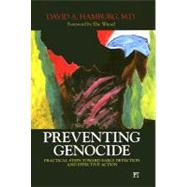
Note: Supplemental materials are not guaranteed with Rental or Used book purchases.
Purchase Benefits
What is included with this book?
| Foreword | |
| Nature and Severity of the Problem | |
| Prevention of Genocide: Introduction and Overview | p. 2 |
| Paths to Genocide: Predisposing and Precipitating Factors and Their Relevance for Prevention | p. 19 |
| An Illustrative Genocide: The Armenians | p. 36 |
| An Illustrative Supergenocide: The Holocaust | p. 42 |
| An Illustrative Genocide: Burundi-Rwanda | p. 60 |
| Preventing Genocide: Leadership, Negotiation, Democracy, and International Help in the Vivid Example of South Africa | p. 72 |
| Pillars of Prevention: Strategies, Tools, and Practices | |
| Proactive Help in Preventing Mass Violence: Preventive Diplomacy and Beyond | p. 98 |
| Democracy and Prevention of Mass Violence | p. 117 |
| Fostering Equitable Socioeconomic Development | p. 140 |
| Education for Human Survival | p. 159 |
| Preventing Human Rights Abuses Through International Justice | p. 178 |
| Restraints on Weaponry | p. 192 |
| Institutions and Organizations: Who Can Do What? | |
| Potential of the United Nations for Preventing Mass Violence | p. 204 |
| The Promise of the European Union for Prevention of Genocide | p. 227 |
| Organisation for Security and Cooperation in Europe: Its Potential for Preventing Genocide | p. 245 |
| The North Atlantic Treaty Organization: An Instrument to Help in Preventing Genocide | p. 256 |
| Conclusion | |
| Summing Up: Essential Points for Preventing Genocide | p. 264 |
| International Centers for the Prevention of Genocide: Unprecedented Historic Opportunities | p. 283 |
| Notes | p. 288 |
| Bibliography | p. 313 |
| Index | p. 326 |
| Credits | p. 334 |
| Table of Contents provided by Blackwell. All Rights Reserved. |
The New copy of this book will include any supplemental materials advertised. Please check the title of the book to determine if it should include any access cards, study guides, lab manuals, CDs, etc.
The Used, Rental and eBook copies of this book are not guaranteed to include any supplemental materials. Typically, only the book itself is included. This is true even if the title states it includes any access cards, study guides, lab manuals, CDs, etc.